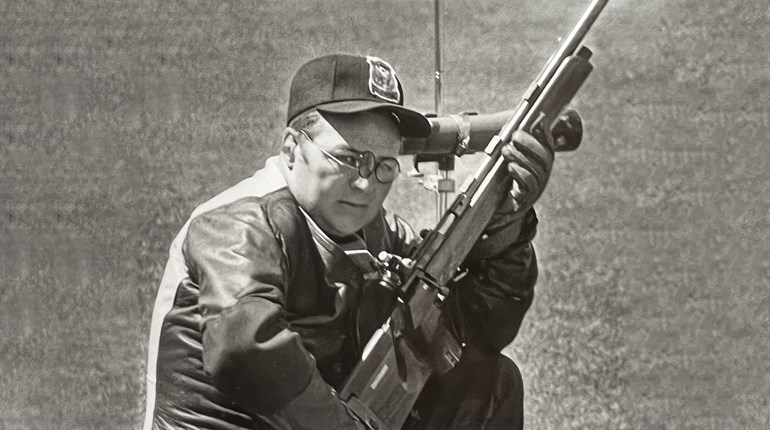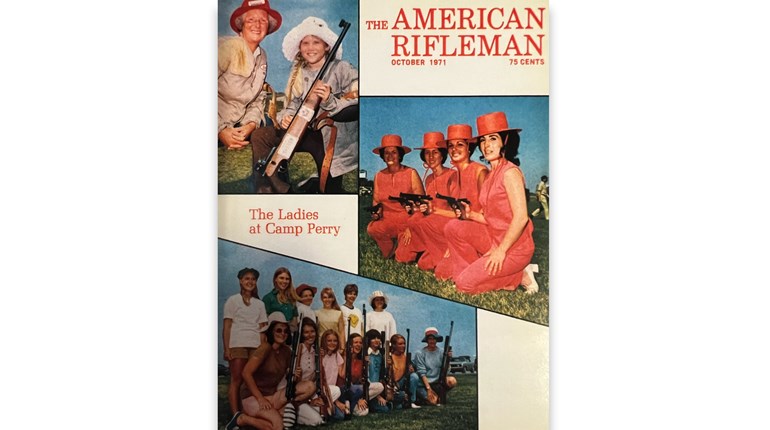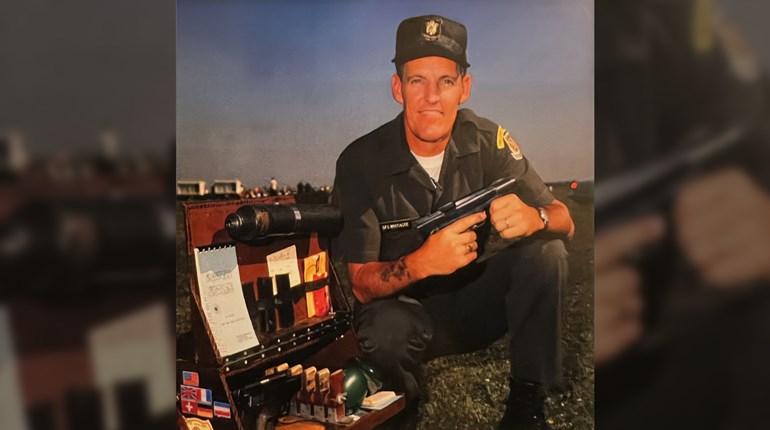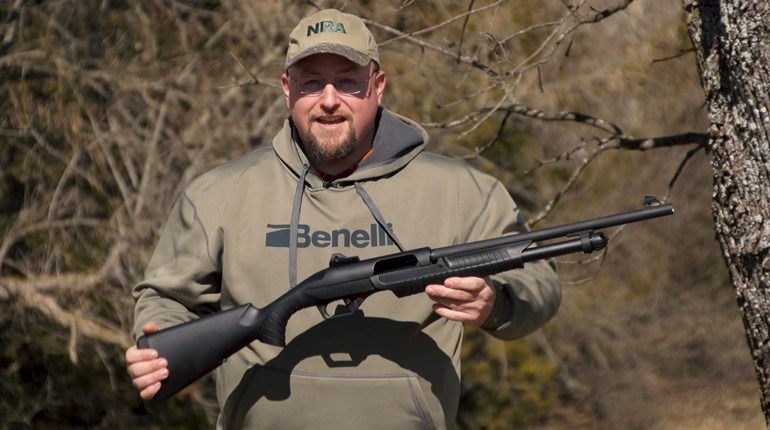
In 1778, America was a ball of turmoil, to say the least ...
In the east, the American Revolution was slowly playing out, an eight-year, David-versus-Goliath, cat-and-mouse war in which the outcome was yet very uncertain. And simultaneously, west of the Appalachian Mountains, the Indian wars were raging, with Anglos attempting to wrest control of the Ohio River Valley from native American tribes, particularly in that region immediately south of the river the Indians called Kanta-Ke.
Into this melee stepped 17-year-old Daniel Trabue of Charlotte County, Virginia. Dark-eyed and black-haired, Daniel stood 5'8" tall and weighed about 160 lbs., typical for a young man of his age at the time. But there were two things about Daniel that made him stand out. First, he was literate, which was not a given at that point in history. And second, later in life he wrote down his memoirs, in detail, so that today—nearly 250 years later—we have an accurate, first-person account of his frontier life.
Daniel Trabue’s adventures began in late January or early February 1778 when he and one of his four older brothers, James, left Virginia on horseback headed west, Daniel taking along his stout bulldog, a good hunter. James had heeded the call of George Rogers Clark that more militia was needed in Kentucky and had signed on, taking along not only his younger brother but several others, a total of seven riflemen and an enslaved boy.
Nine miles past the Cumberland River, the Warrior’s Path they were following merged into the Wilderness Road, blazed by none other than Daniel Boone three years earlier. Both red men and white traveled these trails, often resulting in bloody conflict when their paths inadvertently crossed. James spotted fresh tracks that he was sure had not been made by white hunters and called a halt. Handing the reins of their horses to the slave boy to hold, the men cautiously followed the tracks forward on foot, their flintlock rifles held ready at half-cock.
Rounding a bend in the trail, they spied two Shawnees squatting and eating, totally caught off guard. Daniel fired first, not hitting either Indian, but the shot was enough to scare the pair into a full sprint, the warriors leaving a horde of wares and weapons behind that they had stolen from a raid on the Cherokee.
Continuing west, James, Daniel and the other Virginians arrived at Boonesborough on Easter Sunday, April 16. “The people all ran out overjoyed to see strangers,” Daniel wrote. “They were hospitable to us with what they had. But I thought it was hard times—no bread, no salt, no vegetables, no fruit of any kind, no ardent spirits, indeed nothing but meat.”
The next morning, the Trabues and their group auctioned off the items they had taken from the two Shawnees, each man making about 50 shillings, with the slave boy also getting a share. Daniel stayed at Boonesborough about two weeks before moving on to nearby Logan’s Station, a fort built in 1775 and covering about an acre of ground. Better provisioned than Boonesborough, in addition to meat there was “plenty of milk and butter and some bread.” Meeting other Virginians at the fort, Daniel decided to make Logan’s his Kentucky base of operation.
By mid-July, he had become quartermaster sergeant at Logan’s Station, and during the next three-month period purchased “84 bushels of corn, 724 pounds of pork, 2,779 pounds of ‘tame beef,’ and 2,820 pounds of buffalo meat.” But fort life quickly became routine, even boring at times, so Daniel would often slip outside the palisades to hunt with his bulldog, providing additional meat for the fort. Yet even hunting the woods near the fort was dangerous, as horses continued to be stolen, cattle tomahawked, and men continually sniped at and some killed by the unseen Indians.
To help put an end to this nearly constant harassment, a scouting mission to the Shawnee towns north of the Ohio River was planned by the famous frontiersman Simon Kenton. He would take two other spies with him, George Clarke and Alexander Mongomery, and asked young Daniel Trabue if he’d like to go along. Not believing his good luck, Daniel quickly agreed. To be considered “briar” enough by Simon Kenton was heady stuff. But at the last minute, big-brother James caught wind of the scheme and forbade Daniel to go, likely saving his life.
Daniel wrote that James scolded him saying, “If anything would happen to you how could I ever see our mother? She would say, ‘James how come you lit Daniel go on such an errand?’”
As usual, Mom was right. In his book, The Hunters of Kentucky: A Narrative History of America’s First Far West, 1750-1792, author Ted Franklin Belue described the result of the scouting foray.
“Mongomery was killed, Clarke barely escaped, and Kenton was captured, his captivity leading to months of torture, nine gauntlet runs, a broken arm and collarbone, a blow from a pipe tomahawk that left a dent in his skull deep enough to cup a hickory nut, and more than once, near death at the stake.”
By late autumn, the Indian raids had subsided enough at both Logan’s Station and Boonesborough that Daniel decided to take a chance on returning to Virginia to visit his family. On Christmas Eve 1778, he and two friends started back east on horseback, their meal the next day along the trail consisting of a roasted bear cub. “As good a Christmas dinner as I had ever eaten.” After three weeks of hard winter travel, he arrived back at his home in Chesterfield, Virginia.
By July of 1779, Daniel Trabue was back in Kentucky. “I was truly glad to be at Logan’s Fort again. There was many more people at this fort this year than the year before.”
But the following year brought saddening news. In June, when Captain Henry Bird’s army of 150 British partisans and 700 Indians invaded Kentucky, brother James Trabue was captured at Ruddell’s Station. He was subsequently taken to Detroit, then shipped to Canada. Word also soon arrived that Daniel’s brother, William, had been one of 400 Virginians captured when the British seized Charleston in May of 1780.
With two of his brothers now in English prisons, and another brother, Edward, fighting the war in the southern theater, yet another brother, John, urged Daniel to return home from Kentucky to comfort their widowed mother. At least, he reasoned, it would give her one less wayward Trabue son to worry about. Consequently, in the summer of 1780, Daniel arrived in Virginia after two and a half years on the frontier. But not for long. He would go on to fight the British at Yorktown in 1781 and survive the battle. Both James and William escaped prison within a year.
On July 4, 1782, Daniel married Mary Haskins, their union lasting 46 years until Mary’s death separated them on September 25, 1828. Daniel Trabue would pass away on September 10, 1840, but not before participating in one last memorable Kentucky event—he was present at the controversial court-martial trial of Daniel Boone in 1778, writing down the proceedings for posterity. By the way, Boone was found not guilty by a jury, and to emphasize their verdict, the jurors promoted Boone to the rank of Major of the militia.






































